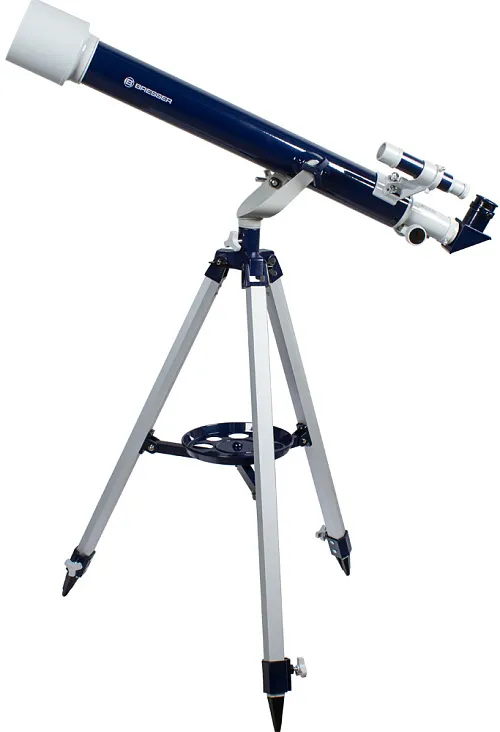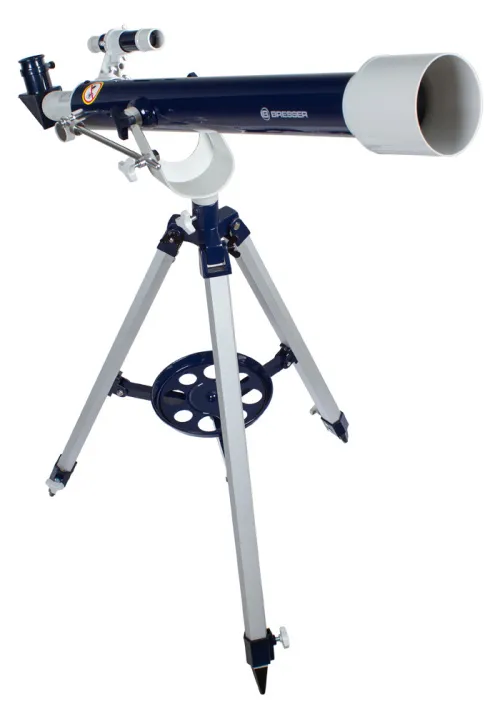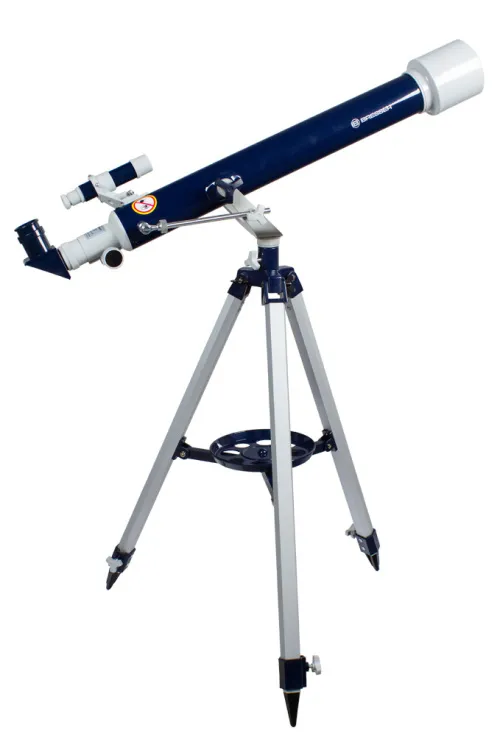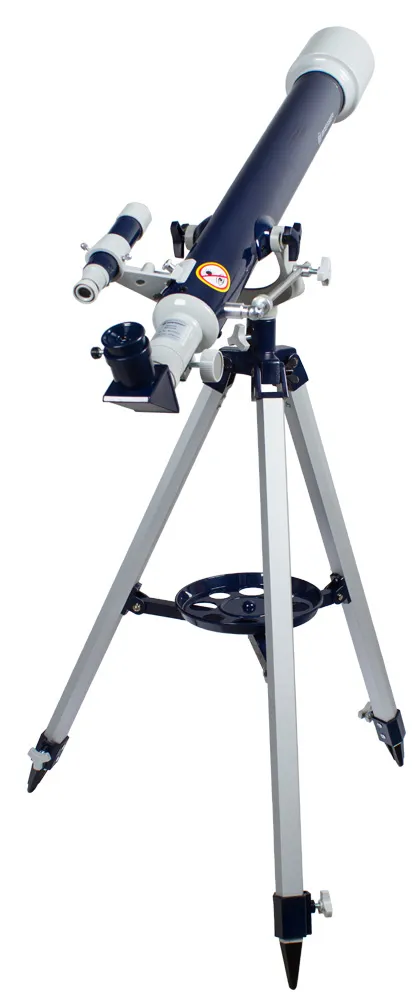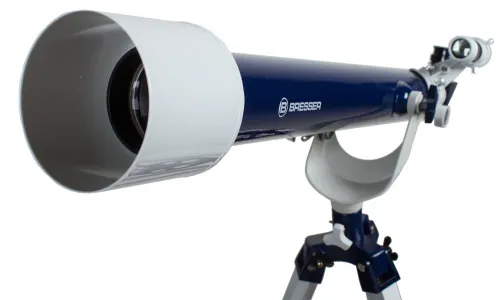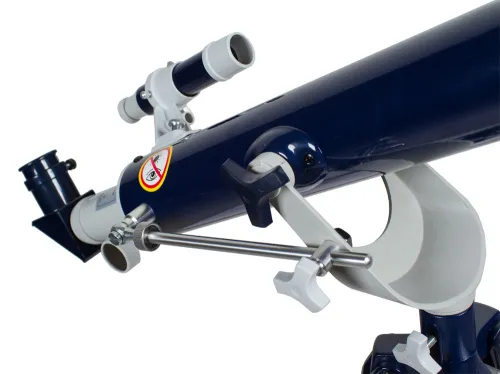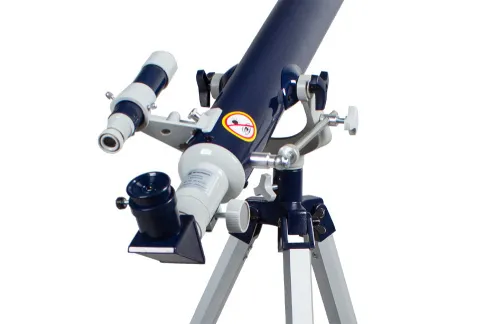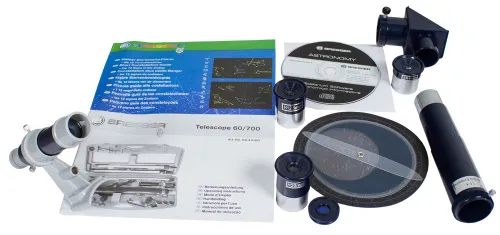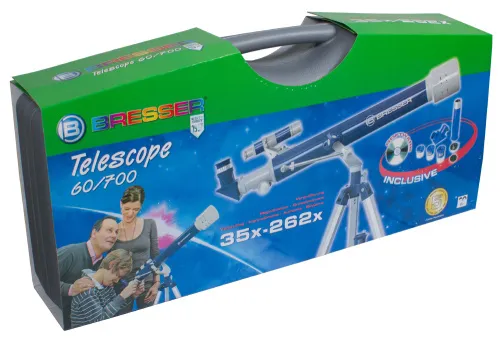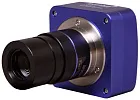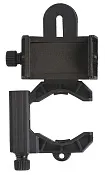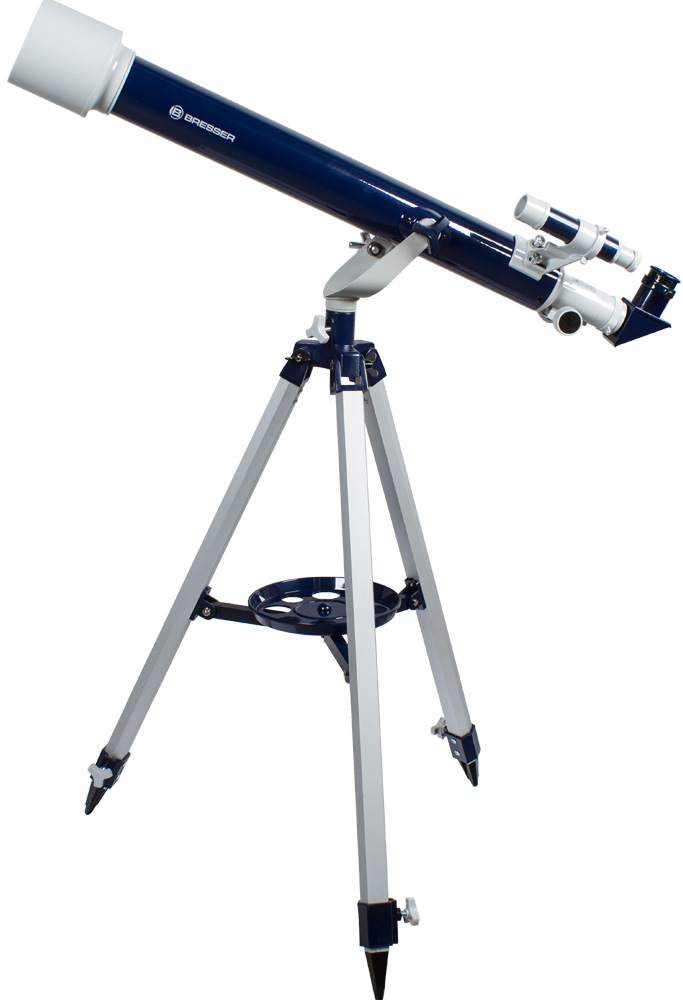Bresser Junior 60/700 AZ1 Telescope
Achromatic refractor. Objective lens diameter: 60mm. Focal length: 700mm
| Product ID | 29911 |
| Brand | Bresser GmbH, Germany |
| Warranty | 2 years |
| EAN | 4007922152813 |
| Package size (LxWxH) | 36x16x76 cm |
| Shipping Weight | 5.4 kg |
Would you like to go on a night walk and experience something out of this world? With a lens aperture of 60mm this 60/700 refractor telescope already collects about 30 percent more light than a telescope with 50mm aperture. The 60/700 already allows for higher magnifications – ideal to investigate in details like lunar craters. An additional finder scope mounted on the telescope makes it easier to locate objects in the sky. With the erecting eyepiece even during the day many exciting things in the surrounding can be observed. Due to the height adjustable tripod, the telescope can be brought to the right height for small or tall observers. The supplied diagonal mirror ensures comfortable viewing.
Field of Application:
At night the moon and planets like Saturn and Jupiter may be explored. But also impressive sparkling star clusters like the Pleiades impress young and old stargazers. With the included erecting prism it is possible to get an unreversed, upright image, for example, for observation of nature during the day.
Special features:
Ultra light: the complete instrument with tripod weighs less than 2kg! Thus, it can also be set up by young researchers themselves, at any time on the balcony or in the garden.
The kit includes:
- Refractor telescope 60/700
- Alt-azimuth mount (left/right and up/down)
- Continuously height adjustable aluminium tripod
- 5x24 finder scope
- 90° diagonal mirror
- Three eyepieces: 4mm (175x magnification), 12.5mm (56x magnification) and 20mm (35x magnification)
- 1.5x errecting lens for laterally correct and upright image
- Pocket compass
- Hard carrying case
- User manual
| Product ID | 29911 |
| Brand | Bresser GmbH, Germany |
| Warranty | 2 years |
| EAN | 4007922152813 |
| Package size (LxWxH) | 36x16x76 cm |
| Shipping Weight | 5.4 kg |
| Optical design | refractor |
| Optical scheme | achromat |
| Objective lens diameter (aperture), mm | 60 |
| Focal length, mm | 700 |
| Lowest practical power, x | 35 |
| Highest practical power, x | 120 |
| Magnification, x | 35 — 262 |
| Aperture ratio | f/11.6 |
| Resolution threshold, arcseconds | 2.2 |
| Eyepieces | 4mm (175x), 12.5mm (56x), 20mm (35x) |
| Eyepiece barrel diameter, in | 1.25 |
| Finderscope | optical, 5x24 |
| Tripod | aluminum |
| Accessory tray | ✓ |
| Telescope control | manual |
| Mount | alt-azimuth, AZ1 |
| Additional | 90° diagonal mirror included, dust protection caps for an open aperture and eyepiece holder |
| Optical tube material | aluminum |
| User level | elementary, beginners |
| Observed object | planets of the Solar System, terrestrial objects |
| Pouch/case/bag in set | case |
Convenient diagrams that describe how to install additional accessories on refractors and catadioptric telescopes
Find out how to assemble a telescope on an example of the Levenhuk Skyline 90x900 EQ telescope
This short guide will help you avoid typical mistakes and learn more about telescope and mounting types
The basics of astronomical observations for beginners
In this article we have gathered answers to some of the most frequently asked questions about telescopes
How telescopes work?
You can actually perform observations from your balcony!
All about telescope sizes, types, magnification, and mounts
Learn how to set up and use the telescope properly
Astronomy in light-polluted skies. Find out what you can observe in the city
Read an interesting comprehensive article on telescopes for little astronomers
Celestial objects you can observe with telescopes of different apertures
Colored and vivid images of galaxies, planets and star clusters entrance everyone who is fascinated by boundless space
Find an interesting review on the history of the changes to a refracting telescope
To make the process of choosing a telescope easier, we will tell you about the characteristics of the most popular types of telescopes today
Learn everything you need to know about refractor telescopes to make the right choice

